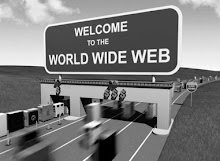Literacy involves gaining the skills and knowledge to read and interpret varying texts and artifacts, and to successfully navigate and negotiate their challenges, conflicts and crises. To the domains of reading, writing, and traditional print literacies, one could argue that in an era of technological revolution, educators must develop robust forms of media literacy, computer literacy, and multimedia literacies, thus cultivating “multi-literacies.”
-Douglas Kellner and Jeff Share, “Media Literacy in the US”
Literacy is defined as “The ability to identify, understand, interpret, create, communicate and compute, using printed and written materials associated with varying contexts" (Literacy, 2007). However, our society is filled with technology such as computers, phones, etc and to be able to participate and engage in this new technological world, writing and reading, although still very important, is not enough.
From what I have read, my take on multiliteracies is that there is more focus on incorporating other aspects of literacy such as visual, audio, images, symbols etc into literacy learning and this is due to the fact that we know live in a technological society where children are using multiliteracies in everyday life, inside and outside the classroom.
Some examples of using multiliteracies in the classroom include:
Digital story telling:
With digital storytelling, students can are able to improve muliteracy skills, show their creativity and also it gives them a voice.
Storybird is a great website where you can see digital stories written by others and it also helps you to create your own stories: http://storybird.com/
Podcasting:
Podcasts allow teachers to provide educational material either for revision or homework so that students can download and use the information at a time that suits them. It is also great for students to share learning experiences.

Yes, it's true that traditional language and literacy skills (notably the reading and writing of texts) remain important, but nowadays written texts are often complemented and supplemented by images, sounds, and video. It's important that students learn to interpret these kinds of multimodal texts as well as learning how to create their own in order to effectively communicate their desired messages to their target audiences.
ReplyDeleteHey Nikki! I think that the key with multiliteracies,is accepting that literacy evolves. Who can imagine what literacies we will be teaching our student's in 20 years (scary thought)! Also I love storybird. Definintely one I will use.
ReplyDeleteI completely agree. Technology is evolving so quickly and there is always something new coming out so in a few years time who knows what we'll be using to teach!
ReplyDeleteHowever, I think it's great that we can incorporate the technology that they use at home and in their free time and use it as an educational resource.